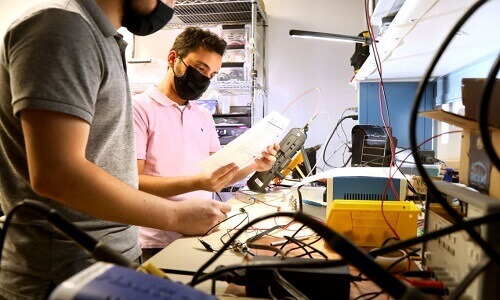The Best Auto Technologies Of 2024
In the nascent era of the automobile, devoid of computerized embellishments, vehicles operated solely through manual mechanisms.
Drivers of that time were compelled to engage in multifaceted tasks, a stark contrast to the contemporary landscape of automotive innovation.
The evolutionary trajectory of technology has intricately woven its threads into the fabric of the automotive industry.
Present-day vehicles boast an array of features that span the spectrum from enhancing comfort to ensuring safety.
It is imperative to delve into a comprehensive examination of these sophisticated features that have become integral components of modern vehicles.
Driver-Assist Features
Several automotive manufacturers offer advanced features designed to enhance vehicle responsiveness to potential hazards, alleviate driver fatigue, and streamline navigation through traffic.
These features are typically bundled into customizable suites, allowing customers to select and integrate them into their vehicles according to individual preferences.
Notable examples of such feature suites include ‘Co-pilot360’ from Ford, ‘Eyesight’ by Subaru, and ‘Safety Sense’ provided by Toyota.
These suites encompass a range of safety measures, contributing to an overall secure driving experience.
Some key safety components within these feature suites include:
- Adaptive Cruise Control: This functionality intelligently sets the vehicle’s speed at a safe distance from the vehicle in the front, promoting optimal driving conditions.
- Lane Departure Warning: A crucial alert system that notifies the driver when the vehicle deviates from its designated lane, enhancing vigilance and reducing the risk of unintentional lane departure.
- Lane Keep Assist: Employing the steering wheel, this feature actively maintains the vehicle within its designated lane, augmenting driver control and reinforcing adherence to traffic lanes.
- Cross-Traffic Alert: Particularly useful during reversing maneuvers, this alert system notifies the driver of potential hazards such as pedestrians or vehicles approaching from the sides, enhancing overall safety awareness.
- Reverse Brake Assist: A proactive safety measure, this feature automatically applies the brakes if the vehicle detects an obstacle behind it during the reversing process. This helps prevent collisions and minimizes the risk of accidents.
These sophisticated safety technologies represent a significant stride in the evolution of automotive engineering, underscoring a commitment to both driver convenience and road safety.
Automatic Emergency Braking
The advanced safety feature you’re referring to, which proactively applies the brakes to avert or mitigate potential accidents, represents a pivotal development in automotive safety technology.
This system, often capable of anticipating impending dangers, initiates the braking process even before the driver takes action.
Recognizing the paramount importance of this safety feature, a noteworthy trend is emerging within the automotive industry.
Many manufacturers have resolved to elevate this capability to a standard feature across their entire vehicle lineup, with the targeted implementation set to be completed by September 2024.
This proactive approach underscores a collective commitment within the industry to prioritize and enhance vehicle safety standards, ensuring that this crucial technology becomes an integral and universally accessible component of modern vehicles.
Connection Of Smartphone Apps
As mobile phones have seamlessly integrated into the fabric of our daily lives, it was a natural progression to incorporate them into the driving experience.
Recognizing this shift, automotive manufacturers have introduced connected smartphone apps tailored to complement the functionality of their vehicles.
These apps extend a spectrum of capabilities, ranging from basic functionalities such as locking and unlocking car doors to providing comprehensive insights into crucial vehicle metrics.
Users can conveniently access information like fuel level and tire pressure through the app, fostering a heightened sense of awareness and control over their vehicle’s status.
Moreover, certain apps even offer the innovative feature of remotely starting the car’s engine, adding a layer of convenience to the driving experience.
Wireless Charging
In the realm of automotive luxury and sophistication, a notable innovation has emerged to cater to the convenience of modern drivers: wireless smartphone charging.
This feature enables users to charge their smartphones without the hassle of cords by simply placing the device on a designated charging pad.
It’s important to note that for this functionality to work, the smartphone must be equipped with wireless charging capability.
Prominent manufacturers renowned for their opulent vehicles, including Rolls Royce, Bentley, Mercedes, and Maybach, have embraced this wireless charging technology.
Typically integrated into the interior design of these high-end vehicles, the wireless charging pad offers a seamless and elegant solution for keeping smartphones charged during journeys.
This feature not only aligns with the commitment to luxury and innovation upheld by these esteemed automakers but also reflects a response to the evolving needs and expectations of modern drivers who seek both cutting-edge technology and refined convenience in their automotive experience.
360-Degree Camera
The 360-degree camera is a pivotal safety feature designed to enhance the parking experience by providing a comprehensive view of the surroundings.
Its functionality goes beyond the limitations of traditional mirrors, offering a complete visual perspective around the vehicle.
When parking, this advanced camera system becomes instrumental in preventing collisions with obstacles behind the vehicle.
Its panoramic view minimizes blind spots, enabling drivers to navigate tight spaces with increased precision.
By offering a real-time, bird’s-eye view of the car’s immediate environment, the 360-degree camera aids in avoiding scratches, dents, and low-speed collisions that could result in insurance claims.
In essence, the integration of a 360-degree camera not only safeguards the vehicle from physical damage but also contributes to overall safety, reducing the likelihood of minor accidents during parking maneuvers.
This feature exemplifies the commitment of automotive manufacturers to leverage technology for both convenience and risk mitigation.
Vehicle Tracking System
The technology you’re referring to is a cutting-edge security feature that serves as a formidable deterrent against vehicle theft.
In the unfortunate event of a car being stolen, this technology enables the owner to track the vehicle’s precise location with remarkable accuracy.
By leveraging advanced GPS (Global Positioning System) technology, this anti-theft system provides real-time updates on the whereabouts of the stolen vehicle.
This not only aids law enforcement in the recovery process but also significantly increases the chances of retrieving the vehicle intact.
This security feature underscores the ongoing efforts within the automotive industry to integrate sophisticated technologies that go beyond the traditional scope of vehicle functionality.
By incorporating such anti-theft measures, manufacturers aim to provide owners with peace of mind and an added layer of protection for their valuable assets.
Blindspot Technology
The technology you’re describing is commonly known as blind-spot monitoring or side-view assist.
This innovative feature provides drivers with a visual aid to enhance awareness when changing lanes, mitigating the risk of collisions with vehicles situated in their blind spots.
Typically, the system utilizes cameras or sensors located on the sides of the vehicle to monitor the adjacent lanes.
The information is then presented to the driver either in the gauge cluster or on the side-view mirrors, offering a clear view of any vehicles in the blind spots.
This real-time feedback empowers drivers to make safer lane-changing decisions.
By seamlessly integrating into the driving experience, blind-spot monitoring exemplifies the commitment of automotive manufacturers to prioritize safety and leverage technology to enhance situational awareness.
This feature not only reduces the likelihood of accidents caused by blind spots but also contributes to overall road safety.
Conclusion
The evolution of vehicle features has transformed the driving experience from a singular focus on navigating roads to a multifaceted integration of convenience, safety, and entertainment.
Contemporary vehicles now offer a range of capabilities that extend beyond traditional driving functions.
The ability to wirelessly charge smartphones while driving exemplifies the seamless integration of technology into the automotive landscape, catering to the demands of modern connectivity.
Additionally, hands-free phone calls, facilitated directly through the vehicle’s interface, enhance safety by minimizing distractions and reducing the need for manual smartphone interaction while driving.
These advancements collectively represent a paradigm shift in driving, elevating safety and entertainment to unprecedented levels.
The convergence of technology and automotive innovation underscores a commitment to providing drivers with a holistic and enhanced driving experience, blending connectivity, safety, and entertainment in a harmonious manner.







